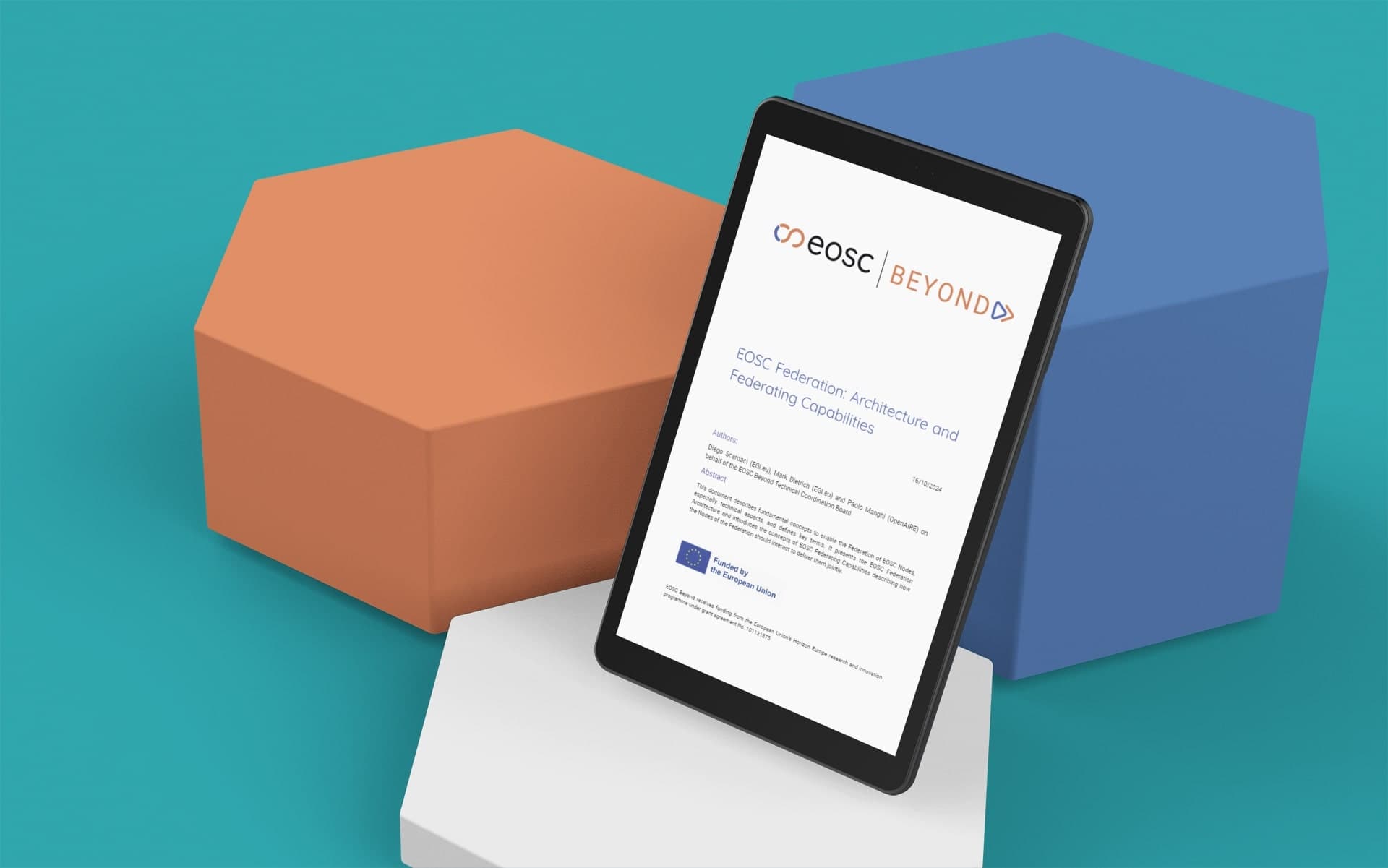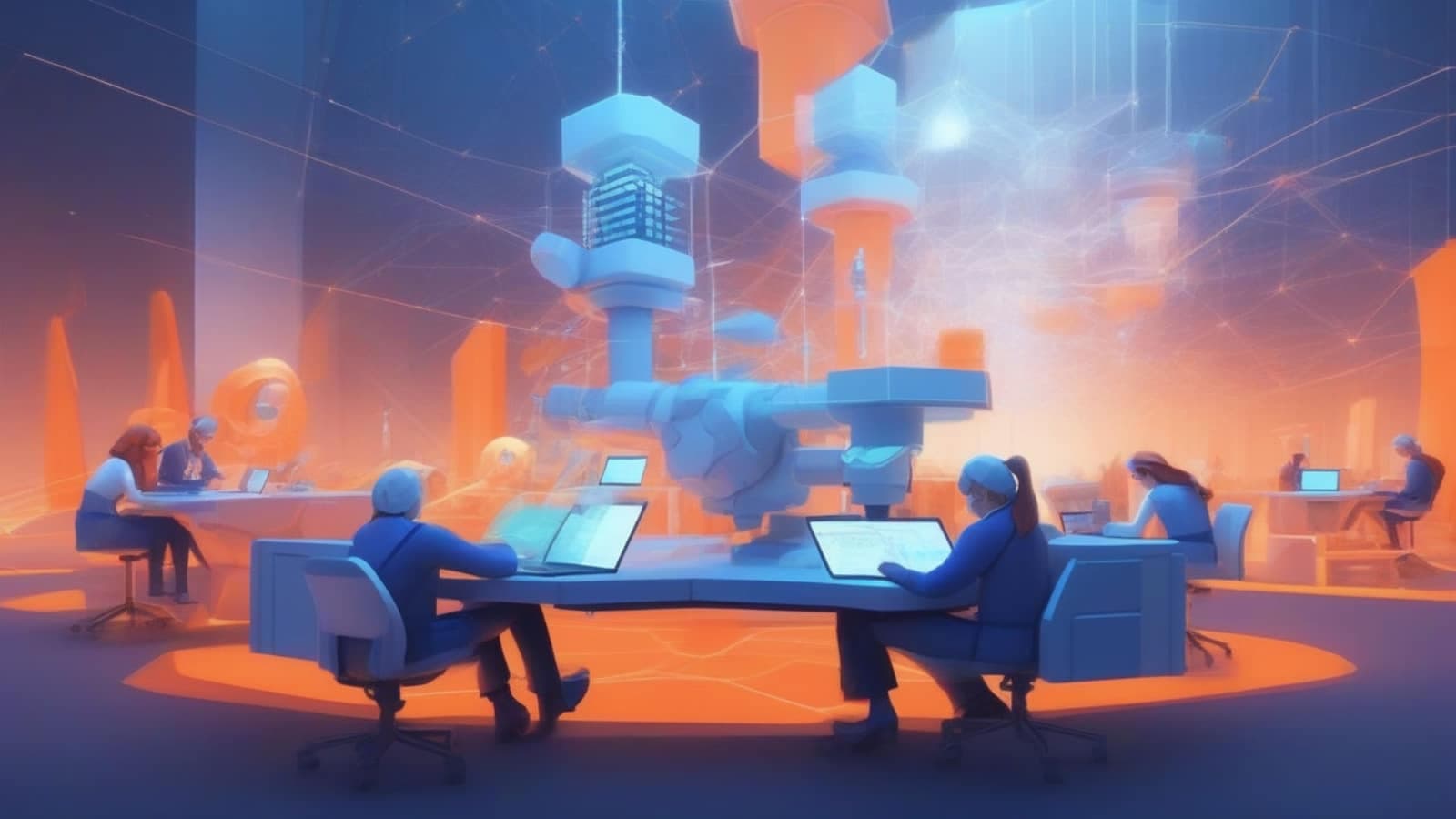The EOSC Beyond project has published a concept paper titled EOSC Federation: Architecture and Federating...
The European Commission Announces the EOSC EU Node’s Transition to Full Production

The European Commission is pleased to announce the official launch of the EOSC EU Node services, marking a critical milestone in its goal to accelerate the adoption of Open Science across Europe.
Following the launch of the EOSC EU Node initial web presence in April 2024, this platform now serves as a gateway for researchers to:
- Discover, access and use tens of millions of scientific publications, data and software.
- Find and access services and tools from research infrastructures, technology providers, world-leading scientific clusters and more.
- Use integrated compute, storage as well as interactive collaboration tools, applications and services free at the point of use.
- Create teams and work together putting Open Science principles in practice to access a variety of tools, services, and resources designed to streamline and enhance their research efforts.
The platform supports users at every stage of the research lifecycle, fostering greater collaboration and innovation across Europe's scientific landscape.
Newly Released Services
The full deployment of the EOSC EU Node includes a robust set of services that address key challenges in modern research workflows, allowing users to operate efficiently within data-intensive environments. The following tools are now live:
- Bulk Data Transfer: Move data effortlessly to data-intensive execution environments. Learn more.
- Large File Transfer: Streamline large file transfers online with added security and integrity. Learn more.
- Virtual Machines: Design and conduct experiments with flexibility while ensuring reproducibility. Learn more.
- Cloud Container Platform: Deploy cloud-native containerised applications that can easily scale. Learn more.
- Interactive Notebooks: Create and share documents with real-time code execution. Learn more.
- File Sync & Share: Enable automatic file syncing and secure sharing across locations and teams. Learn more.
These services not only facilitate collaboration across borders but also enable researchers to work with large-scale data, develop advanced simulations, and execute complex computations—all within a secure and highly integrated environment.
In line with its mission to promote Open Science, the EOSC EU Node is the first European-level node of the emerging EOSC Federation, which is envisioned to be a network of interconnected autonomous nodes, all operating under a common framework of standards, policies, and best practices. It welcomes contributions from scientific resource providers throughout Europe, known as Contributors within the EOSC EU Node ecosystem, are invited to share their data, software, services, and tools, expanding the rich ecosystem of resources available through the platform.
With the launch of these services, contributors can now access select core capabilities "as a Service," allowing them to leverage EOSC's infrastructure for their own projects. This federated approach to resource sharing is a key feature of the EOSC EU Node, creating a more collaborative and interconnected research environment.
As the EOSC EU Node continues to evolve, users and contributors alike are encouraged to stay engaged with the platform - not only by utilising and contributing to its services, tools, and resources, but also by sharing insights and providing feedback through the User or Technology Forum. Future updates will bring additional features and functionalities, further enhancing the capacity of researchers across Europe to pursue groundbreaking discoveries. The EOSC EU Node remains committed to supporting the European research community in its mission to accelerate scientific progress and innovation through Open Science.
For more information and to explore the newly launched services, please visit the EOSC EU Node website.
Originally published on the EOSC EU Node website.
Related Content



EOSC Beyond’s Deliverable 5.1, detailing collaboration with the EOSC EU Node and a technical roadmap,...
